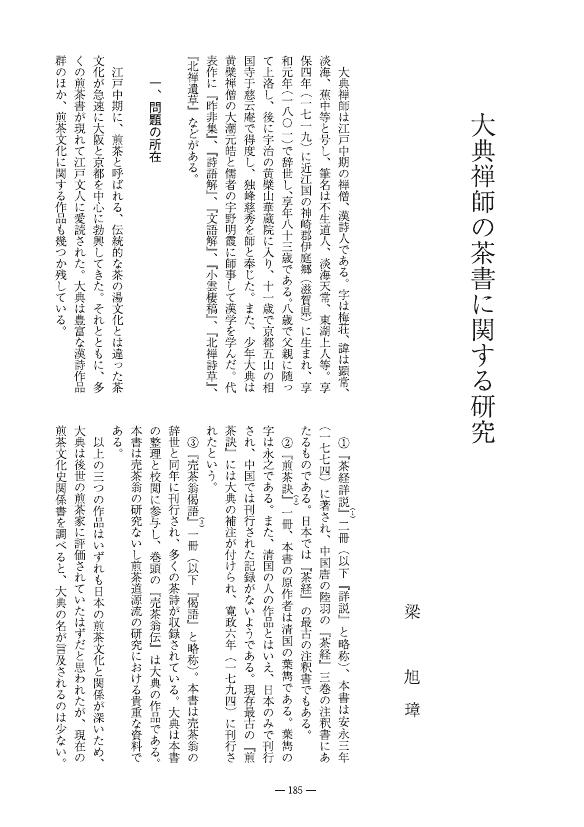- 著者
- 肥和野 佳子
- 出版者
- 不明
- 雑誌
- 日本教育社会学会大会発表要旨集録
- 巻号頁・発行日
- no.37, pp.84-85, 1985
7 0 0 0 OA ハイブリッドフェリー「さんふらわあ ふらの」竣工
- 著者
- 黒瀬 康弘
- 出版者
- 公益社団法人 日本マリンエンジニアリング学会
- 雑誌
- マリンエンジニアリング (ISSN:13461427)
- 巻号頁・発行日
- vol.52, no.5, pp.618-625, 2017-09-01 (Released:2018-03-07)
7 0 0 0 OA 組合せ最適化問題に向けたCMOS アニーリングマシン
- 著者
- 山岡 雅直
- 出版者
- 一般社団法人 電子情報通信学会
- 雑誌
- 電子情報通信学会 基礎・境界ソサイエティ Fundamentals Review (ISSN:18820875)
- 巻号頁・発行日
- vol.11, no.3, pp.164-171, 2018-01-01 (Released:2018-01-01)
- 参考文献数
- 12
- 被引用文献数
- 1
組合せ最適化問題を効率良く解くアーキテクチャとしてイジングモデルを用いたアニーリングマシンが提案されている.アニーリングマシンでは組合せ最適化問題を磁性体のスピンの挙動を表すイジングモデルに写像しその収束動作により問題を解く.アニーリングマシンを半導体回路を用いて実装したCMOSアニーリングマシンでは,確定的な動作と確率的な動作の組合せで効率的に解を求める.試作チップにより,組合せ最適化問題の近似解が効率的に求められることを確認するとともに,従来のノイマン形計算機を用いた場合に比べて電力効率が向上することを確認した.また,実用化する際に必要となる技術レイヤについても紹介する.
7 0 0 0 OA 医療の多様性と“価値に基づく医療”
- 著者
- 尾藤 誠司
- 出版者
- 一般社団法人 日本内科学会
- 雑誌
- 日本内科学会雑誌 (ISSN:00215384)
- 巻号頁・発行日
- vol.103, no.11, pp.2829-2834, 2014-11-10 (Released:2015-11-10)
- 参考文献数
- 3
- 被引用文献数
- 1 1
7 0 0 0 OA 日本におけるホタテガイ増養殖と研究の変遷
- 著者
- 小坂 善信
- 出版者
- 日本水産増殖学会
- 雑誌
- 水産増殖 (ISSN:03714217)
- 巻号頁・発行日
- vol.65, no.3, pp.271-287, 2017-09-20 (Released:2018-09-20)
- 参考文献数
- 130
The culture of scallops in Japan has a history of about 60 years. A major change was spat collection using an onion bag, which was invented by a fisherman in the 1960s and greatly changed the fishery production of scallops not only in Japan but the world. I will describe the general history of the scallop fishery in Japan and research that has supported the fishery and scallop culture.
7 0 0 0 IR くずし字による古典教育の試み : 日本近世文学会による出前授業
- 著者
- MIYAKE H. KATO Y. KATO T. 三宅 宏幸 加藤 弓枝 加藤 直志
- 出版者
- 名古屋大学教育学部附属中・高等学校
- 雑誌
- 名古屋大学教育学部附属中高等学校紀要 (ISSN:03874761)
- 巻号頁・発行日
- vol.61, pp.134-142, 2016-12-01
教科研究・特別研究 Research of Subject
7 0 0 0 OA 若き日のかたみ : 紫式部集の一視点
- 著者
- 原田 敦子
- 出版者
- 同志社大学国文学会
- 雑誌
- 同志社国文学 = Doshisha Kokubungaku (ISSN:03898717)
- 巻号頁・発行日
- no.11, pp.36-46, 1976-02
7 0 0 0 OA 大典禅師の茶書に関する研究
- 著者
- 梁 旭璋
- 出版者
- 東京学芸大学国語国文学会
- 雑誌
- 学芸国語国文学 (ISSN:03879135)
- 巻号頁・発行日
- vol.50, pp.185-197, 2018 (Released:2018-10-15)
7 0 0 0 IR 境界の鳥 : ニワトリをめぐる信仰と民俗
- 著者
- 小池 淳一
- 出版者
- 国文学研究資料館
- 雑誌
- 国文学研究資料館紀要. 文学研究篇 (ISSN:18802230)
- 巻号頁・発行日
- no.44, pp.259-273, 2018-03
本稿は日本の民俗文化におけるニワトリをめぐる伝承を素材にその特徴を考察するものである。ここではニワトリをめぐる呪術や祭祀、伝説を取り上げ、民俗的な世界観のなかでのニワトリについて考え、その位相を確認していく。それによって文芸世界におけるニワトリを考究する前提、もしくは基盤を構築する。まず、呪術としては水死体を発見するためにニワトリを用いる方法が近世期以降、日本各地で見いだせることに注目した。生と死、水中と陸上といった互いに異なる世界の境界でニワトリが用いられたのである。続いてニワトリが関わる祭祀として、禁忌とされたり、形そのものが神聖なものとされる場合があることを指摘した。さらにその神格としても移動や境界にまつわるとされることを述べた。最後に伝説においても土中に埋められた黄金がニワトリのかたちであったり、年の替わり目にニワトリが鳴いて黄金の存在を示すといった例が多く見いだせることを確認した。総じて、ニワトリをめぐる伝承の多くは移動や変化に関わり、またその存在は特定の時空でくり返し、想起されるものであった。まさにニワトリは境界をめぐる伝承を集約する鳥なのであった。こうした生活世界における伝承を改めて意識することで、かつてのニワトリに対する感覚を思い起こし、境界という時空が持つ可能性と潜在的な力を再認識することができよう。This article is an examination of salient features found in traditional Japanese folk customs associated with the domestic fowl (niwatori). More specifically, I look at a handful of magical incantations, religious rites, and legends surrounding the domestic fowl as a means of grasping the role of this bird within the Japanese folk imagination, which understanding will, it is hoped, serve to enrich our appreciation of this same bird's role in literature and the arts.First, I point out the ritualistic practice, found all throughout Japan since the early modern period, of using a domestic fowl is order to ascertain the whereabouts of a corpse of one who died by drowning. In such instances, the domestic fowl serves as an intermediary between two different between life and death, and between the world under water and that upon the land. Next, I foreground the various ways in which the domestic fowl was viewed during certain religious rituals: sometimes it was considered as a taboo object, while at other times its very form was seen as sacred. I then note how the domestic fowl, thus elevated to sacred status, was venerated during certain times of communal movement, as well as at certain liminal sites. Finally, I confirm a number of instances in which the domestic fowl is linked to gold: Gold buried under the earth was reported at times to resemble the shape of this bird. Also, the bird was believed to sing out at the start of a new year, thereby signaling the presence of gold nearby.In conclusion, the domestic fowl was associated in the folk imagination with an array of set occasions—specific times and venues-which were, in turn, often related to significant movements or transformations. As such, the domestic fowl took upon itself a number of traditions reminiscent of one form or another of liminality. By reconsidering these lived traditions, we are able to catch a glimpse of how Japanese people perceived this familiar bird, as well as gain added insight into the various possibilities and latent power of liminal spaces and events.
7 0 0 0 OA 書棚と平台 : 近代日本における購書空間の形成
- 著者
- 柴野 京子
- 出版者
- 日本マス・コミュニケーション学会
- 雑誌
- マス・コミュニケーション研究 (ISSN:13411306)
- 巻号頁・発行日
- vol.73, pp.41-59, 2008-07-31 (Released:2017-10-06)
- 参考文献数
- 49
This study aims to examine the impact of distribution systems on publishing and reading in modern Japan. In analyzing the formation of bookstores from the Meiji through Showa periods, this essay considers the two major spaces within those stores - the bookshelf and the table - within their distinct historical contexts. While the use of bookshelves came from the West and formed an intellectual, and constructed space, traditional Japanese books for commoners were sold on tables placed outdoors to provide easy access to the masses. The modern "bookstore" integrated these two spaces, resulting in the formation of an intermediate class of readers.
7 0 0 0 OA ヒト初回投与試験 (FIH 試験) を含む早期臨床試験のチェックリスト
- 著者
- 日本臨床薬理学会 FIH 試験チェックリスト作成タスクフォース
- 出版者
- 一般社団法人 日本臨床薬理学会
- 雑誌
- 臨床薬理 (ISSN:03881601)
- 巻号頁・発行日
- vol.49, no.5, pp.183-194, 2018-09-30 (Released:2018-10-27)
- 参考文献数
- 7
- 被引用文献数
- 2 2
7 0 0 0 IR <論文> 幕末政治社会の形成 : 嘉永六年七月の諮問と答申をめぐって
- 著者
- 井上 勲
- 出版者
- 学習院大学
- 雑誌
- 学習院大学史料館紀要 (ISSN:02890860)
- 巻号頁・発行日
- no.9, pp.103-168, 1997-03-25
7 0 0 0 OA シカ肉の加工・調理とレオロジー
- 著者
- 吉村 美紀
- 出版者
- 特定非営利活動法人 日本バイオレオロジー学会
- 雑誌
- 日本バイオレオロジー学会誌 (ISSN:09134778)
- 巻号頁・発行日
- vol.32, no.1, pp.22-29, 2018 (Released:2020-03-26)
- 参考文献数
- 31
7 0 0 0 OA 北奥羽方言におけるアイヌ語アクセント型の残存の蓋然性についての実証的研究
本年度は予定通りに著書刊行した。平成21年度から24年度までのフィールド調査の結果をまとめ,それを著書の一章として取り込み、以前の2つの科研費による調査(H12~H15「樺太アイヌ語の母音の長短と北海道アイヌ語の高さアクセントの史的関係の解明」(H16~H19「東北地方におけるマタギ語彙の研究とマタギ語辞典の編纂」)を基盤として一章として組み入れた。その他アイヌ語に関する論文やそれを傍証する遺伝学、人類学、考古学、地名学などを援用し、学際的アプローチから上梓した。著書名は「アイヌ語・日本語の形成過程の解明に向けての研究」―地域言語学、言語類型論、通時言語学を基盤にした学際的アプローチーとした。
- 著者
- 喜多 由美子
- 出版者
- 日本図書館協会
- 雑誌
- 図書館雑誌 (ISSN:03854000)
- 巻号頁・発行日
- vol.105, no.12, pp.802-803, 2011-12




